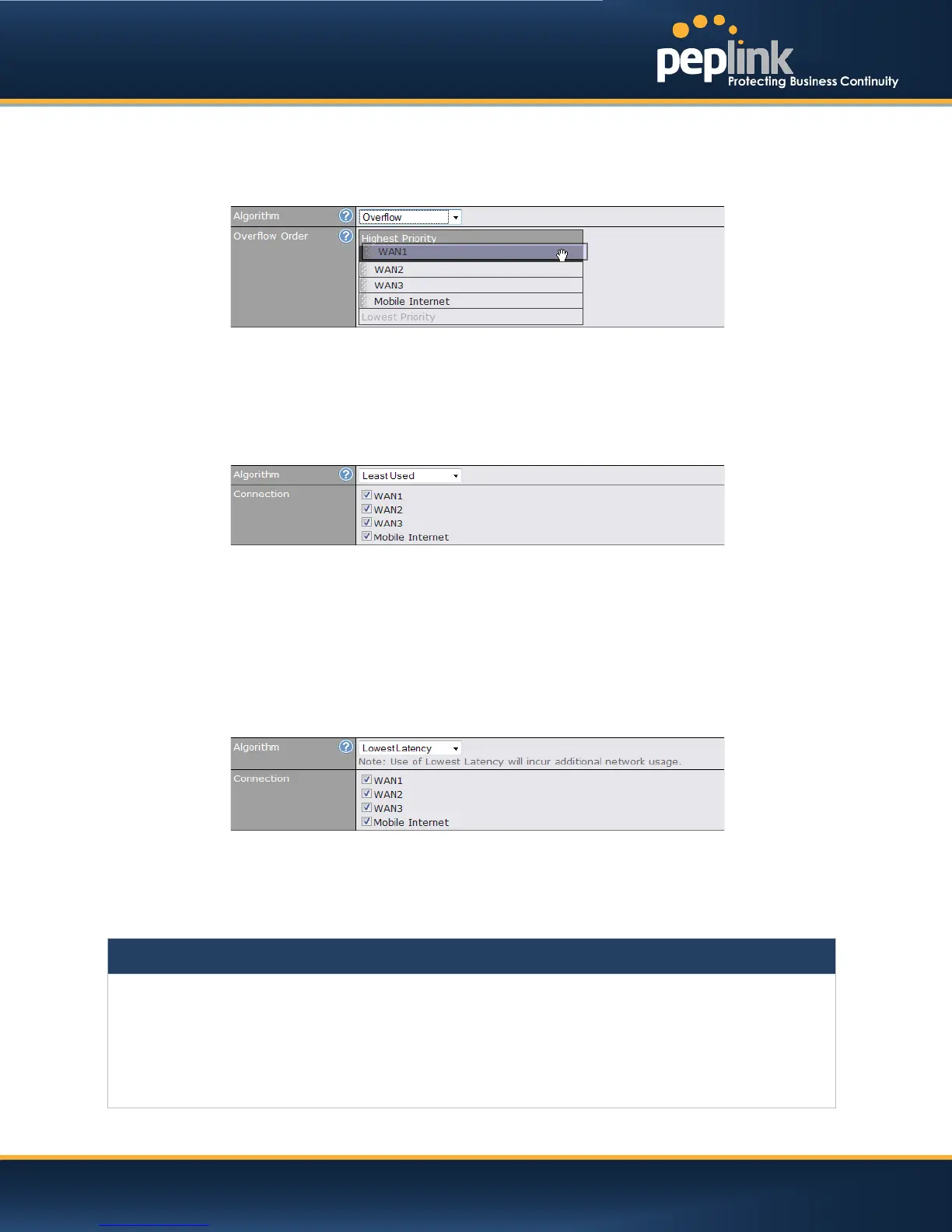USER MANUAL
Peplink Balance Series
14.2.5 Algorithm: Overflow
The traffic matching this rule will be routed through the healthy WAN connection that has the highest
priority and is not in full load. When this connection gets saturated, new sessions will be routed to the
next healthy WAN connection that is not in full load.
Drag and drop to specify the order of WAN connections to be used for routing traffic. Only the highest
priority healthy connection that is not in full load will be utilized.
14.2.6 Algorithm: Least Used
(Available on Peplink Balance 210+)
The traffic matching this rule will be routed through the healthy WAN connection that is selected in the
field Connectionand has the most available download bandwidth. The available download bandwidth of a
WAN connection is calculated from the total download bandwidth specified in the WAN settings page and
the current download usage. The available bandwidth and WAN selection is determined every time when
an IP session is made.
14.2.7 Algorithm: Lowest Latency
(Available on Peplink Balance 210+)
The traffic matching this rule will be routed through the healthy WAN connection that is selected in the
field Connection and has the lowest latency. Latency checking packets are issued periodically to a nearby
router of each WAN connection to determine its latency value. The latency of a WAN is the packet round
trip time of the WAN connection. Additional network usage may be incurred as a result.
Tip
The round trip time of a “6M down /640k up”linkcan be higher than that of a “2M down /2M up” link. It isbecause the
overall round trip time is lengthened by its slowerupload bandwidth despite of its higher downlink speed. Therefore
this algorithm isgood for two scenarios:
• All WAN connections are symmetric; or
• A latency sensitive application requires to be routed through the lowestlatency WANregardless the WAN’s
available bandwidth.
http://www.peplink.com -90 / 207 - Copyright © 2013 Peplink

